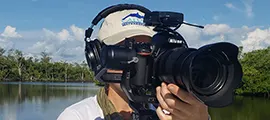Calusa Waterkeeper Joins Environmental Groups in Law Suit Against Federal Agencies
Calusa Waterkeeper, Center for Biodiversity, and the Waterkeeper Alliance are Suing the ACOE, USDEP and others for Violations of the Endangered Species Act
However, there is significant uncertainty associated with restoration timelines, driven by such factors as climate change, available Congressional and state funding, a swelling state population and worsening water quality. With current plans, these complexities will severely complicate or limit future options. More adaptive planning that explores a greater range of options in response to these stressors will be required and part of the reason the Lake Okeechobee Regulation Schedule (LORS), starting in 2008, was to only continue for three years.
The 2018 independent review of progress on Everglades restoration by the National Academies of Science, Engineering and Medicine indicated that at current funding levels, it could take 65 years to complete the presently authorized restoration projects. The same review also indicated it was time to consider the rate and influence of changing ecological conditions and to plan accordingly.
The growing realization that timely action is needed to avoid potentially catastrophic consequences is disturbing and becoming more evident each passing year. Symptoms of the water quality and quantity crisis have never been more dire. Lake Okeechobee may be approaching a tipping point as the lake’s submersed vegetation has declined since 2006, evolving towards dominance by algae, ultimately sent downstream by Lake discharges.
The two worst blue-green algae blooms in state history have occurred over the past three years. A state of emergency was declared each time, earning national media attention.
Three of the six longest documented red tide blooms over the last 65 years have occurred since 2002 and the current bloom, third longest duration, is not over yet. The top four years with the highest manatee mortality since 1974 have occurred since 2010. Endangered sea turtle strandings along the southwest Florida coast over the past year have exceeded 1,200 and of those, 577 were attributed to red tide, the highest number on record. At least 126 dolphins have stranded or died due to exposure to toxic red tide over the last six months.
The economic impacts of harmful algal blooms to public health, tourism and property value is staggering. Sanibel Island alone accounted for $26 million in costs for just 10 weeks of this year’s harmful algal blooms.
The health costs, that we know of, are likely the tip of the iceberg. Testing results for the presence of the toxin microcystin in volunteer subjects in Stuart, this past summer indicated 100 percent were positive. Even the air sampling conducted by FGCU for the cyanotoxin microcystin found positive results as far away as Bonita Springs.
Given the urgency of this crisis, a 60-day notice of intent to sue the federal agencies responsible for LORS was filed by the Center for Biodiversity, Calusa Waterkeeper and the Waterkeeper Alliance on Dec. 19 for violations of the Endangered Species Act.
The stakes have never been higher and the time for bold action cannot wait.
























